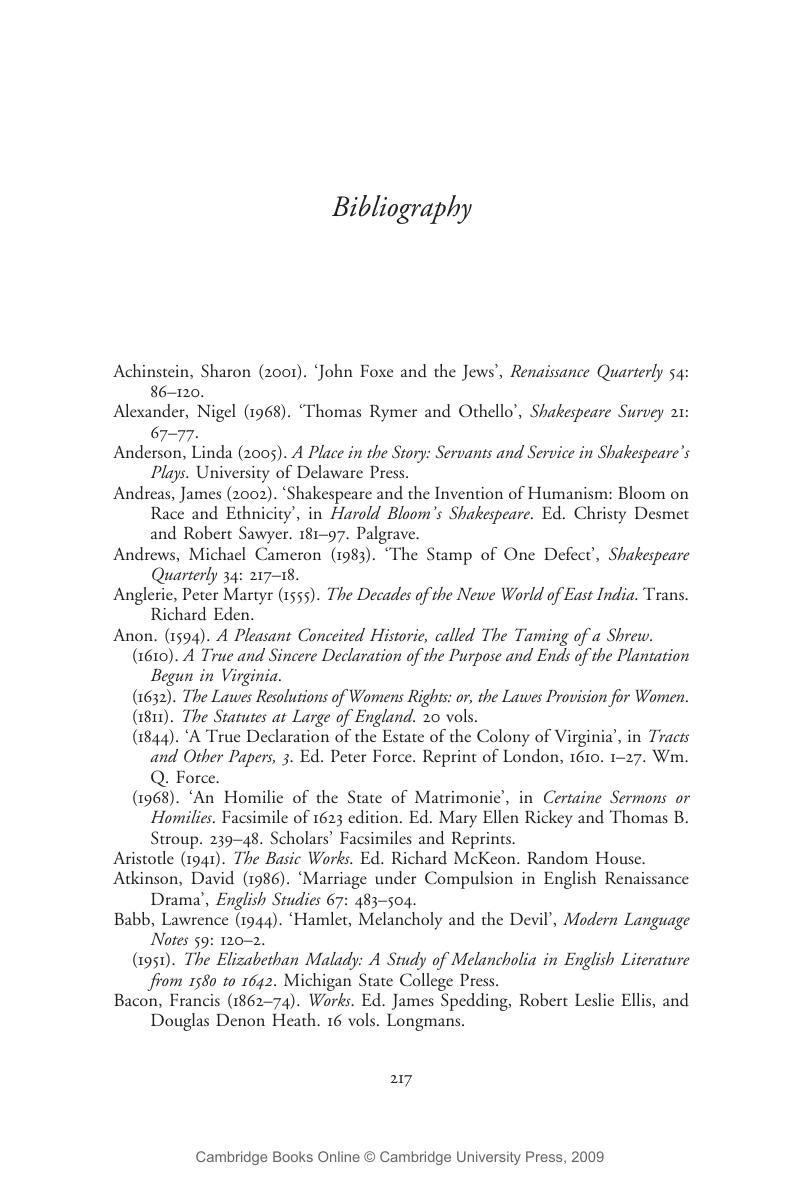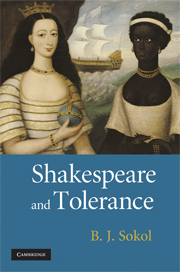Book contents
- Frontmatter
- Contents
- List of abbreviated titles
- Introduction
- 1 Shakespeare, jokes, humour, and tolerance
- 2 Shakespeare, gender, and tolerance
- 3 Shakespeare, tolerance, and nationality
- 4 Shakespeare, tolerance, and religion
- 5 ‘Race’, part one
- 6 ‘Race’, part two: Shakespeare and slavery
- 7 Afterword: tolerance as a species of love
- Notes
- Bibliography
- Index
- References
Bibliography
Published online by Cambridge University Press: 20 August 2009
- Frontmatter
- Contents
- List of abbreviated titles
- Introduction
- 1 Shakespeare, jokes, humour, and tolerance
- 2 Shakespeare, gender, and tolerance
- 3 Shakespeare, tolerance, and nationality
- 4 Shakespeare, tolerance, and religion
- 5 ‘Race’, part one
- 6 ‘Race’, part two: Shakespeare and slavery
- 7 Afterword: tolerance as a species of love
- Notes
- Bibliography
- Index
- References
Summary

- Type
- Chapter
- Information
- Shakespeare and Tolerance , pp. 217 - 241Publisher: Cambridge University PressPrint publication year: 2008

